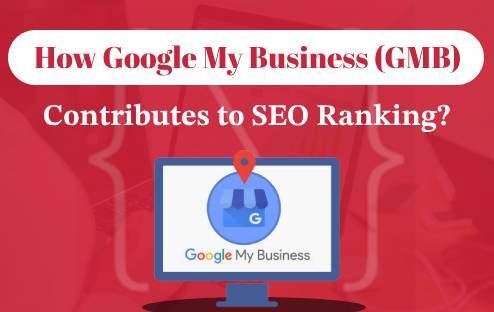
Nowadays, a strong SEO (Search Engine Optimization) strategy is no longer optional – it’s essential for driving organic traffic, increasing brand awareness, and achieving your online business goals. But with Google’s algorithms constantly evolving, staying ahead of the curve can feel overwhelming.
This guide will equip you with the latest SEO tactics and best practices for 2024, helping you take your website’s ranking and visibility to the next level.
Understanding Google’s SEO Landscape in 2024
Google’s core objective is to provide users with the most relevant and valuable search results. To achieve this, they consider a complex web of factors, including:
- Content Quality and Expertise (E-A-T): Google prioritizes content created by experts and demonstrably trustworthy sources. Focus on in-depth research, fact-checking, and showcasing your niche authority.
- User Experience (UX): A website’s ease of navigation, mobile-friendliness, and loading speed all significantly impact SEO.
- Search Intent: Go beyond basic keyword targeting. Understand the “why” behind user searches and tailor your content to answer their specific questions and needs.
- Semantic Search and Voice Search: As search queries become more conversational, optimize your content for long-tail keywords and natural language.
Building a Rock-Solid SEO Strategy for 2024
Here’s a step-by-step approach to crafting a future-proof SEO strategy for 2024:
1. Keyword Research: The Foundation of Success
- Start with a Brainstorming Session: Identify relevant topics within your niche and the questions your target audience might be asking.
- Leverage SEO Tools: Utilize keyword research tools like Google Keyword Planner to discover high-volume, low-competition keywords with strong commercial intent (search queries with the potential to convert visitors into customers).
- Prioritize Long-Tail Keywords: Target longer, more specific keyword phrases that demonstrate user intent and allow you to create highly relevant content.
2. Analyze Your Competitors
Identify your top organic competitors through tools like SEMrush or Ahrefs. Analyze their top-performing content to understand what resonates with your audience and identify potential gaps in their strategy.
3. Create Compelling Content That Stands Out
- Become a Thought Leader: Don’t just replicate what others are doing. Strive to create unique, informative content that offers a fresh perspective and valuable insights.
- Optimize for Readability: Structure your content with clear headings, subheadings, and bullet points for easy skimming and comprehension.
- Incorporate Multimedia: Integrate relevant images, infographics, and videos to enhance user engagement and break up text-heavy sections.
4. Master On-Page SEO for Enhanced Visibility
On-page SEO refers to optimizing the elements within your website to improve search engine ranking. Here’s what to focus on:
- Keyword Integration: While keyword stuffing is a penalty, strategically incorporating your target keywords throughout your content (title tags, meta descriptions, headers, and naturally within the text) is essential.
- Internal Linking: Create a strong internal linking structure to connect relevant pages on your website, allowing search engines to crawl and understand your content hierarchy.
- Image Optimization: Include relevant alt tags for all images, providing context and improving accessibility.
5. Build Good Backlinks
Backlinks (links from other websites to yours) remain a critical SEO ranking factor. Here are some strategies to secure valuable backlinks:
- Create Link-Worthy Content: People naturally want to link to high-quality, informative content. Focus on creating resources that others will find valuable enough to share.
- Guest Blogging: Contribute guest articles to reputable websites within your niche, including a link back to your own site in the author bio.
- Broken Link Building: Identify broken links on relevant websites and reach out to the webmaster, suggesting your high-quality content as a replacement.
6. Ensure User Experience (UX) for Long-Term Success
A website that ensures user experience is more likely to keep visitors engaged and coming back for more. This, in turn, sends positive signals to search engines. Here’s how to optimize your UX:
- Mobile-First Design: Ensure your website is responsive and delivers a seamless experience across all devices (desktop, mobile, tablet).
- Fast Loading Speeds: Nobody likes a slow website. Use caching plugins and image optimization techniques to ensure your pages load quickly.
- Clear Navigation: Make it easy for users to find what they’re looking for. So, implement a clear and intuitive website navigation structure.
- Optimize for Core Web Vitals: These Google metrics assess factors like loading speed, responsiveness, and visual stability – all crucial for a positive user experience.
- Focus on User Engagement: Keep visitors engaged with internal linking, calls to action, and interactive elements like polls or quizzes.
7. Embrace Continuous Monitoring and Adapting
SEO is an ongoing process. Here’s how to stay ahead of the curve:
- Utilize SEO Tracking Tools: Tools like Google Search Console and Google Analytics provide valuable insights into your website’s performance, keyword ranking, and user behavior.
- Stay Updated on Google Algorithm Changes: Google’s algorithm is constantly evolving. Regularly check industry publications and SEO resources to stay informed about the latest best practices.
- Content Refreshment is Key: Regularly review and update your top-performing content to maintain its relevance and keep Google’s crawlers coming back for more.
By following these comprehensive SEO strategies, you can take your website to the next level in 2024. Remember, SEO is a marathon, not a sprint. Focus on creating high-quality content, optimizing user experience, and building a strong online presence – and you’ll see your website climb the search engine rankings and attract a steady stream of organic traffic.

The world of SEO is constantly evolving, and with the introduction of Google Bard, a new wave of possibilities is emerging. This innovative AI tool, built on Google’s LaMDA language model, promises to be a game-changer for businesses looking to optimize their online presence and climb the search engine rankings. But how exactly can Bard transform your SEO strategy? Let’s explore some the exciting ways this AI assistant can empower your content creation, website optimization, and overall SEO approach.
- Semantic Understanding: Traditional SEO strategies often revolved around keyword optimization, with a focus on stuffing content with targeted keywords. However, Google Bard emphasizes semantic understanding, meaning it can discern the underlying meaning of words and phrases within the context of a sentence or paragraph. This allows for more natural and engaging content creation, rather than forced keyword insertion.
- Intent-Based Search Results: With Google Bard, search results are not just based on exact keyword matches but also on the intent behind the search query. By analyzing the context of the query, including the user’s search history, location, and other relevant factors, Google Bard delivers more personalized and relevant search results. As a result, businesses can tailor their SEO strategies to better align with user intent, leading to higher conversion rates and improved user satisfaction.
- Natural Language Queries: The rise of voice search and conversational interfaces has transformed the way people interact with search engines. Google Bard is adept at understanding natural language queries, including long-tail keywords and conversational phrases. This means that businesses can optimize their content for a wider range of search queries, capturing more organic traffic and catering to the growing number of voice search users.
- Content Quality and Relevance: In the era of Google Bard, quality reigns supreme. Search engines prioritize content that is not only relevant to the user’s query but also authoritative, comprehensive, and well-written. By focusing on creating high-quality content that provides value to your target audience, you can improve your chances of ranking highly in search results and establishing your brand as a trusted source of information.
- User Experience Optimization: Beyond content relevance, Google Bard also takes into account factors related to user experience, such as page load speed, mobile-friendliness, and overall website usability. By optimizing your website for these factors, you can enhance the user experience and increase the likelihood of retaining visitors and encouraging repeat visits.
- Structured Data and Schema Markup: Leveraging structured data and schema markup can provide search engines with additional context about your content, helping them understand its relevance and significance. Google Bard is adept at interpreting structured data, allowing businesses to enhance their search listings with rich snippets, knowledge graphs, and other interactive elements that can attract more clicks and improve visibility in search results.
- Adaptability and Evolution: As with any technology driven by machine learning, Google Bard is constantly evolving and improving over time. This means that SEO strategies must also adapt and evolve to keep pace with the latest developments. By staying informed about updates and best practices related to Google Bard, businesses can maintain their competitive edge and continue to reap the benefits of effective SEO.
In conclusion, Google Bard has the potential to transform the way businesses approach SEO. By using its AI capabilities, businesses can enhance their content creation process, improve keyword research, optimize meta tags and descriptions, enhance user experience, and stay up to date with algorithm updates. Embracing this revolutionary tool can give businesses a competitive advantage in the ever-evolving world of SEO, leading to improved rankings, increased organic traffic, and ultimately, better business outcomes.
ALSO READ: How Are The Keywords Determined For SEO Needs?

SEO or search engine optimization is a critical part of digital marketing. The process of optimizing your website to rank higher on search engine result pages (SERPs) is what SEO is all about. One of the most important aspects of SEO is determining the right keywords for your website.
Keywords are the words or phrases that people use to search for a particular service or product on search engines. Keywords play an essential role in SEO because they help search engines to understand the context and theme of your website. Using the right keywords can help improve your website’s visibility, drive traffic, and ultimately increase conversions.
So, how are the keywords determined for SEO needs? Here are some of the ways you can determine the right keywords for your website:
- Relevance: The chosen keywords must be highly relevant to your business, website content, and target audience. Targeting irrelevant keywords might attract traffic, but it won’t convert if it doesn’t match your offerings.
- Search Volume: This refers to the average number of times a particular keyword is searched for in a given period. Ideally, you want keywords with a decent search volume to attract a sizable audience. However, it’s not always about chasing the highest numbers.
- Competition: Some high-volume keywords might be extremely competitive, making it difficult for new websites to rank well. Consider the level of competition you’re facing when choosing keywords.
- Search Intent: Understanding the searcher’s intent behind a keyword is crucial. Are they looking for information, trying to compare products, or ready to make a purchase? Optimizing your content for the searcher’s intent will improve its effectiveness.
The Steps to Successful Keyword Research
Now that we understand the importance of choosing the right keywords, let’s explore the steps involved in conducting successful keyword research:
- Brainstorming Relevant Topics: Start by brainstorming a list of topics highly relevant to your niche and target audience. Think about the products or services you offer, the problems you solve, and the information your ideal customer might be searching for.
- Keyword Exploration Tools: Utilize keyword research tools like Google Keyword Planner, SEMrush, or Ahrefs to discover related keywords and search phrases. These tools provide valuable data on search volume, competition level, and even suggest long-tail keywords (more specific keyword phrases).
- Analyzing Search Results (SERPs): Take some time to analyze the top-ranking pages for your target keywords. This will give you valuable insights into the type of content that is already ranking well. You can then identify opportunities to create even better, more informative, or unique content that stands out from the competition.
- Prioritizing Your Keywords: Once you have a comprehensive list of potential keywords, prioritize them based on the factors mentioned earlier. Consider using a mix of high-volume, medium-volume, and long-tail keywords to create a well-rounded SEO strategy.
Additional SEO Considerations
While keyword research is a fundamental aspect of SEO, it’s not the only factor at play. Here are some additional considerations to keep in mind:
On-Page Optimization: Once you’ve identified your target keywords, integrate them naturally into your website content, page titles, meta descriptions, and header tags.
Content Quality: Creating high-quality, informative, and engaging content that caters to your target audience’s needs is essential. Google prioritizes valuable content that provides a positive user experience.
Backlinks: Earning backlinks (links from other websites to yours) is another crucial SEO factor. Backlinks signal to search engines that your website is trustworthy and relevant.
Conclusion
Effective keyword research is a crucial part of successful SEO strategy. By understanding the factors that influence keyword selection and following the steps outlined above, you can identify the right keywords to target and optimize your website content for better organic search visibility. Remember, SEO is an ongoing process. Regularly revisit your keyword strategy, analyze your website’s performance, and adapt your approach to stay ahead of the curve.
ALSO READ: What is Sitemap & How does It help in SEO?

In the age of digital domination, local businesses need to be present where their customers are searching – online. And when it comes to local search, Google My Business (GMB) reigns supreme. Beyond simply creating a virtual presence, GMB offers a powerful tool to boost your SEO ranking and attract more customers through your doors.
But how exactly does GMB contribute to SEO? Let’s jump into the secrets:-
1. Relevance & Visibility
- Local Pack Domination: Claiming and optimizing your GMB profile increases your chances of appearing in the coveted Local Pack, the top three business listings displayed for local searches. This prime real estate drives significant traffic and brand awareness.
- Keyword Optimization: Include relevant keywords in your business description, category selection, and posts to enhance discoverability by potential customers searching for your offerings.
- Complete & Consistent Information: Ensure your NAP (Name, Address, Phone number) is accurate and consistent across all online platforms, including your website and social media. Google favors listings with consistent information, boosting your local relevance.
2. Building Trust & Credibility
- Positive Reviews & Ratings: Encourage customers to leave positive reviews and respond to both positive and negative feedback promptly and professionally. Google considers the quantity and quality of reviews as a ranking factor, showcasing businesses with strong reputations.
- Direct Communication: Interact with your customers through reviews and Q&A sections, demonstrating responsiveness and engagement. This builds trust and strengthens your online presence.
3. Content & Engagement
- Regular Posts: Update your GMB profile with engaging posts, including photos, videos, and events. This keeps your profile fresh, attracts attention, and provides valuable information to potential customers.
- Showcase Products & Services: Highlight your offerings with detailed descriptions, high-quality visuals, and call-to-actions. This entices customers to learn more and potentially transact.
- Local Events & Offers: Promote local events, discounts, and special offers through GMB posts, attracting customers searching for deals in your area.
4. Mobile Magic
- Mobile-Friendly Profile: Ensure your GMB profile is mobile-optimized for seamless user experience on smartphones and tablets, where a significant portion of local searches occur.
- Click-to-Call & Directions: Enable click-to-call functionality and provide clear directions, making it easy for mobile users to contact and visit your business.
5. Beyond Local: GMB’s broader SEO impact
While the primary benefits lie in local search, GMB can also influence your overall SEO ranking. Positive reviews and engagement signals on your GMB profile can potentially improve your website’s ranking in organic search results.
Remember: GMB is a dynamic platform. Regularly update your profile, respond to reviews, and adapt your strategy to stay ahead of the curve. By leveraging these tips and understanding how GMB contributes to SEO, you can unlock the true potential of local search and attract more customers to your business.
Bonus Tip: Integrate your GMB profile with your website and social media for a strong online presence and further SEO benefits.
So, Start optimizing your GMB profile today and watch your local SEO soar!
ALSO READ:- What is Sitemap & How does It help in SEO?

In the world of search engine optimization (SEO), there are several tools and strategies that can help improve a website’s visibility and ranking. One such tool is the sitemap. A sitemap is a file that contains a list of all the pages on a website, along with their relationship to each other. It serves as a map for search engine crawlers to navigate and understand the structure of a website. In this blog, we will take a closer look at what sitemap is and how it can help in SEO.
What is a Sitemap?
A sitemap is a file in XML format that lists all the URLs of a website. It is created and submitted to search engines to help them crawl and index a website efficiently. It includes information such as the date the page was last updated, how often it changes, and its importance in relation to other pages on the site. Sitemaps can also contain additional metadata, such as images and videos, which can further enhance a website’s visibility in search results.
Types of Sitemaps
There are two types of sitemaps: XML sitemap and HTML sitemap. An XML sitemap is designed for search engines, while an HTML sitemap is created for human visitors. Both serve different purposes and are crucial for a well-optimized website.
XML Sitemap: As mentioned earlier, an XML sitemap is a file that search engines use to crawl and index a website’s pages. It helps search engines discover pages that may not be easily found through traditional crawling methods. It also provides valuable information about the website’s structure and content, making it easier for search engines to understand and rank the site.
HTML Sitemap: An HTML sitemap, on the other hand, is created for human visitors. It is a list of all the pages on a website, organized in a user-friendly format. It helps visitors navigate a site and find the information they are looking for quickly. HTML sitemaps also improve the user experience and can lead to increased engagement and conversions.
How does Sitemap Help in SEO?
Now that we have a better understanding of what a sitemap is let’s explore how it can benefit SEO.
1. Improved Crawling and Indexing
As mentioned earlier, a sitemap helps search engines crawl and index a website more efficiently. By providing a list of all the pages on a site, including their hierarchy and relationship, search engines can quickly discover and index new or updated content. This is especially useful for larger websites with many pages that may not be linked together or easily found through traditional crawling methods.
2. Better Visibility in Search Results
Sitemaps also help search engines understand the content and structure of a website, which can lead to better visibility in search results. By providing important information such as the date the page was last updated and its importance in relation to other pages on the site, search engines can determine the relevance and importance of a page, which can impact its ranking in search results.
3. Higher Ranking for Deep Pages
Deep pages, or pages that are buried deep within a website’s structure, may not be easily discovered by search engine crawlers. By including these pages in a sitemap, they have a higher chance of being crawled and indexed, which can improve their ranking in search results. This is especially beneficial for e-commerce websites with a large number of product pages that may not be linked to the main navigation.
4. Increased Crawl Frequency
Websites that are frequently updated may benefit from a sitemap as it can help increase the crawl frequency. By providing information about the last update for a page, search engines can determine when to re-crawl and index the page, ensuring that the most recent content is reflected in search results.
5. Enhanced User Experience
As mentioned earlier, an HTML sitemap can improve the user experience by helping visitors navigate a website more easily. It can also help visitors find the information they are looking for quickly, leading to increased engagement and conversions. This can indirectly impact SEO as search engines consider user experience as a ranking factor.
Conclusion
In conclusion, a sitemap is a valuable tool in the world of SEO. It helps search engines crawl and index a website more efficiently, leading to improved visibility and ranking in search results. It also enhances the user experience and can indirectly impact SEO. Therefore, it is essential to create and regularly update sitemaps for a well-optimized website.
ALSO READ: How Schema Markup Contributes to Your SEO Ranking?

In the ever-evolving landscape of digital marketing, staying ahead of the curve is essential for businesses looking to maintain and enhance their online presence. One of the latest trends reshaping the way consumers interact with the internet is the rise of voice search. As voice-enabled devices like smart speakers and virtual assistants become increasingly popular, their impact on various aspects of online business, particularly eCommerce SEO, cannot be ignored.
The Evolution of Search
Traditional methods of searching, such as typing queries into a search engine, are being complemented and, in some cases, replaced by voice search. The convenience and efficiency of asking a question aloud instead of typing have led to a surge in the adoption of voice-activated devices. Virtual assistants like Amazon’s Alexa, Apple’s Siri, Google Assistant, and Microsoft’s Cortana have become integral parts of people’s daily lives, transforming the way they gather information and make purchasing decisions.
Changing Search Queries
Voice searches tend to differ significantly from text-based searches. When typing a query, users often use concise phrases or keywords, while voice searches tend to be more conversational and natural. For instance, someone might type “best smartphones 2023,” but in a voice search, they might ask, “What are the top-rated smartphones of 2023?” This shift in search behavior has profound implications for eCommerce businesses aiming to optimize their content for search engines.
Long-Tail Keywords Gain Prominence
With the shift towards more conversational queries, the importance of long-tail keywords has increased. These are specific, detailed phrases that users are more likely to use in voice searches. Businesses must adapt their SEO strategies to incorporate these longer, more natural phrases to ensure their products and services are discoverable in voice search results.
Local SEO and Mobile Optimization
Voice searches are often location-specific, with users asking questions like “Where is the nearest electronics store?” This emphasizes the need for robust local SEO strategies for eCommerce businesses. Ensuring that your business’s information is accurate and up-to-date on platforms like Google My Business is crucial for capturing local voice search traffic.
Additionally, mobile optimization plays a significant role, as many voice searches occur on mobile devices. A seamless and mobile-friendly website becomes even more critical to providing a positive user experience and ranking well in voice search results.
The Rise of Featured Snippets
Voice search results are often drawn from featured snippets – concise, information-packed answers that appear at the top of search engine results. Structuring content to provide clear, concise answers to common questions related to your products or services increases the likelihood of your content being featured in voice search results, thereby boosting your visibility and credibility.
Conversational Content is Key
To align with the more conversational nature of voice searches, eCommerce websites need to create content that feels natural when spoken aloud. This involves not only integrating long-tail keywords but also adopting a tone that mimics how people ask questions in real-life conversations. User-friendly, conversational content enhances the overall user experience and increases the chances of being favored by voice search algorithms.
Optimizing Product Information for Voice Search
As voice searches become more prevalent in eCommerce, it’s crucial to optimize product information for this shift in user behavior. This includes creating detailed product descriptions using natural language, incorporating relevant long-tail keywords, and ensuring that your product information is easily digestible for voice-activated devices.
The Future of eCommerce SEO
The impact of voice search on eCommerce SEO is undeniable, and businesses that embrace and adapt to this change will undoubtedly have a competitive advantage. Staying informed about emerging trends, understanding evolving consumer behavior, and continuously optimizing online content for voice search are key strategies for eCommerce success in this dynamic digital landscape.
In conclusion, as voice search continues to reshape the digital landscape, eCommerce businesses must evolve their SEO strategies to remain visible and competitive. By understanding the changing nature of search queries, focusing on local SEO, optimizing for mobile devices, and creating conversational content, businesses can position themselves to thrive in the era of voice-activated search. Embracing these changes today will not only enhance current SEO efforts but also future-proof online businesses in the evolving world of eCommerce.
ALSO READ: Role of UX Design in eCommerce Website Development

In the vast and ever-expanding world of the internet, search engines serve as our trusty guides, helping us navigate the web’s seemingly endless sea of information. Google, being the most prominent of these digital guides, deploys a complex system to ensure that it efficiently and accurately presents us with the most relevant search results. This system involves two essential processes: crawling and indexing. In this blog, we will delve deep into the world of Google’s crawling and indexing, unveiling the mysteries behind how the search engine makes sense of the internet.
Crawling: The First Step
Crawling is the first step in Google’s process of organizing the web. Imagine the internet as a vast library, and Google’s crawlers as diligent librarians, scouring the shelves for books. In this case, web pages are the books, and crawlers are automated bots or spiders, programmed to methodically traverse the internet.
How Crawling Works
The process begins when Google’s crawlers visit a web page, typically by following links from other pages or through a sitemap submitted by website owners. The bot then downloads the page’s HTML content, analyzes it, and follows any links found within the content. This process continues, forming a vast network of interconnected pages. It’s worth noting that Googlebot doesn’t view websites like humans do; instead, it relies on the HTML source code and text content.
Crawling Frequency
Not all websites are crawled with the same frequency. Google assigns a crawl budget to each site, considering factors such as the site’s importance, update frequency, and server response time. High-quality, frequently updated websites usually get crawled more often, while low-quality or rarely updated sites may be crawled less frequently.
Robots.txt and Meta Robots
Website owners have the ability to control what parts of their site are crawled through a file called ‘robots.txt’ and by using ‘meta robots’ tags in their HTML. These tools allow site owners to exclude specific pages or directories from being crawled by Google.
Indexing: The Second Step
Once a page is crawled and its content is analyzed, Google adds it to its vast database, also known as the index. The index is like a giant catalog of the internet’s content, allowing Google to quickly retrieve and display relevant search results to users.
How Indexing Works
Google’s indexing process involves parsing and storing the information from a web page. This information includes text content, images, videos, and even structured data like schema markup. This stored data is then analyzed and sorted, making it easier to retrieve when a user conducts a search query.
Duplicate Content
One critical aspect of indexing is managing duplicate content. Duplicate content can confuse search engines and negatively impact a site’s search rankings. Google’s indexing system aims to identify and consolidate duplicate pages, ensuring that only one version is stored in the index.
Updating the Index
The index is not static; it’s constantly updated to reflect changes on the web. When Google’s crawlers revisit a page and detect changes, the index is updated accordingly. This process ensures that search results are current and relevant to users.
The Connection between Crawling and Indexing
The relationship between crawling and indexing is intimate. Crawling provides the raw data, and indexing organizes and makes sense of this data. When a user enters a search query, Google’s search algorithms consult the index to provide the most relevant results.
The efficiency and accuracy of this process depend on how well Googlebot crawls and how comprehensively Google’s index reflects the content of the web. For website owners and digital marketers, understanding this relationship is crucial, as it helps optimize a site’s visibility in search results.
Best Practices for Website Owners
Now that we have a better grasp of Google’s crawling and indexing processes, let’s explore some best practices for website owners:
Optimize Crawlability: Ensure that your website is easily crawlable by organizing your site structure, using clear and concise HTML, and creating a sitemap.
Quality Content: Publish high-quality, relevant content that engages users. Google’s algorithms favor fresh, unique, and valuable content.
Mobile-Friendly: With the mobile-first indexing approach, it’s essential to have a mobile-friendly website for a broader reach.
Page Speed: Fast-loading pages are essential for a good user experience and can positively impact your search rankings.
HTTPS: Secure your website with HTTPS, as Google prefers secure sites and ranks them higher.
Structured Data: Implement structured data markup (schema.org) to enhance the visibility of rich snippets in search results.
Regular Updates: Keep your site fresh and updated, as this encourages Google to crawl and index your site more frequently.
Duplicate Content: Avoid duplicate content issues by using canonical tags or redirects to specify the preferred version of a page.
Robot Directives: Use robots.txt and meta robots tags to control which parts of your site are crawled.
Monitor Performance: Regularly check your site’s performance in Google Search Console to identify crawl and indexing issues.
Conclusion
Google’s crawling and indexing processes are the backbone of the search engine’s ability to provide users with relevant and up-to-date information from the vast expanse of the internet. Understanding these processes and implementing best practices can significantly impact a website’s visibility and search rankings.
Website owners and digital marketers should continuously adapt to the evolving landscape of SEO and search engine algorithms, ensuring their sites are not only crawled but also indexed effectively. By doing so, they can harness the immense power of Google to connect with a global audience and provide valuable information to those in search of answers, products, or services.
ALSO READ: How Schema Markup Contributes to Your SEO Ranking?

If you’re a WordPress user, you’re probably familiar with the Yoast SEO plugin. It has been a go-to tool for optimizing your website’s search engine visibility for years. However, it’s not the only player in the game. There are several excellent alternatives that can help you handle your WordPress SEO effectively. In this article, we’ll explore some of the best Yoast SEO alternatives that can take your website’s search engine optimization to the next level.
1. Rank Math
Rank Math is a powerful plugin that has gained a lot of popularity in recent years. It offers a user-friendly interface and a wide range of features that make optimizing your content for search engines a breeze. From on-page optimization to schema markup, Rank Math covers all the essential aspects of SEO. It also provides detailed suggestions for improving your content and helps you monitor your website’s performance over time.
2. All in One SEO Pack
As the name suggests, the All in One SEO Pack aims to provide a comprehensive solution for your WordPress SEO needs. It’s one of the oldest SEO plugins for WordPress and has a proven track record. With features like XML sitemaps, social media integration, and performance optimization, this plugin offers a well-rounded approach to improving your website’s visibility.
3. SEOPress
SEOPress is another robust alternative to Yoast SEO that has been gaining traction. It offers both a free and a pro version, making it suitable for both beginners and advanced users. SEOPress provides features like content analysis, XML and HTML sitemaps, breadcrumbs, and even integrates with Google Analytics. Its focus on performance optimization can also help boost your website’s loading speed, which is a crucial factor for SEO.
4. Squirrly SEO
Squirrly SEO is a unique plugin that is designed with content creators in mind. It offers real-time guidance while you’re writing your content, ensuring that your articles are not only search engine friendly but also engaging for your audience. Squirrly provides a comprehensive SEO audit, keyword research tools, and even helps you monitor your competitors. It’s a great choice if you’re looking for a plugin that seamlessly blends SEO with content creation.
ALSO READ: AdSense Alternatives Top 8 Best Ad Networks for 2023
5. SEO Framework
If you prefer a lightweight SEO plugin that doesn’t overwhelm you with options, the SEO Framework might be the right choice. It focuses on automating many technical aspects of SEO, such as generating meta tags and optimizing images. The plugin follows Google’s best practices, and its simplicity makes it a great alternative for those who want a hands-off approach to SEO.
6. Slim SEO
As the name suggests, Slim SEO is a lightweight and fast alternative to Yoast SEO. It doesn’t have an overwhelming number of features, but it covers all the essentials. From XML sitemaps to meta tag optimization, Slim SEO ensures that your website is well-prepared for search engines without bogging down your site with unnecessary bloat.
7. Broken Link Checker
While not a full-fledged SEO plugin, Broken Link Checker is a handy tool to have in your arsenal. Broken links can harm your website’s SEO by creating a poor user experience and negatively affecting your search engine rankings. This plugin scans your website for broken links and missing images, allowing you to fix them promptly and maintain a healthy website.
Conclusion
While Yoast SEO has been a staple in the WordPress ecosystem, it’s essential to explore alternatives that may better suit your needs and preferences. Whether you’re looking for a feature-rich SEO suite, a content-focused approach, or a lightweight solution, there are plenty of options available. Each of the mentioned alternatives comes with its unique set of features, so take the time to assess which one aligns best with your website’s goals and your level of expertise. Ultimately, the right SEO plugin can significantly impact your website’s visibility and success in the digital landscape.

In today’s digital age, having a strong online presence is essential for businesses and individuals alike. Search Engine Optimization (SEO) plays a crucial role in ensuring your website is discoverable by search engines and, consequently, by your target audience. Among the myriad of SEO tools available, Yoast SEO stands out as a powerful and user-friendly plugin for WordPress users. In this comprehensive tutorial, we will take you from a beginner’s understanding of Yoast SEO to mastering its advanced features in just 7 steps. Get ready to unlock the potential of your website and soar up the search rankings!
Step 1: Introduction to Yoast SEO
Let’s start with the basics. Yoast SEO is a plugin designed to simplify the process of optimizing your website’s content for search engines. It offers a range of tools and features that guide you through the intricate world of SEO, even if you’re not an expert. Installing Yoast SEO is straightforward; navigate to your WordPress dashboard, click on “Plugins,” then “Add New,” and search for “Yoast SEO.” Install and activate the plugin, and you’re ready to begin!
Step 2: Basic Configuration
Upon activation, Yoast SEO provides a configuration wizard that guides you through the initial setup. This wizard helps you configure essential settings like your site’s name, whether it’s a company or a person, and your preferred separator for title tags. You can also set up your social media profiles, which Yoast SEO will integrate into your website’s metadata. These initial steps lay the foundation for effective SEO practices.
Step 3: Keyword Research
Keywords are the heart of SEO. Identifying the right keywords ensures your content reaches the right audience. Use tools like Google Keyword Planner or Ubersuggest to find relevant keywords with a balance between search volume and competition. Once you have your keywords, Yoast SEO’s “Focus Keyphrase” feature helps you integrate them strategically into your content.
ALSO READ: What is Image SEO and How to Optimize Images for Search Engines?
Step 4: Optimizing Content
Creating high-quality content is essential, but optimizing it for search engines is equally important. Yoast SEO’s real-time content analysis provides valuable suggestions for improving your content’s SEO. It evaluates factors like keyword usage, readability, internal and external links, and more. The plugin’s color-coded indicators (red, orange, green) make it easy to gauge your content’s optimization status at a glance.
Step 5: Crafting SEO-Friendly Titles and Meta Descriptions
Your page’s title tag and meta description are prime real estate for attracting clicks from search engine result pages (SERPs). Yoast SEO allows you to customize these elements, ensuring they are both keyword-rich and engaging. The plugin provides a preview of how your page will appear in search results, allowing you to fine-tune your titles and meta descriptions for maximum impact.
Step 6: Technical SEO and XML Sitemaps
Technical SEO involves optimizing the technical aspects of your website for better search engine crawling and indexing. Yoast SEO helps simplify this process by generating XML sitemaps – a roadmap for search engines to navigate your site’s structure. Additionally, the plugin offers features to set canonical URLs, manage breadcrumbs, and control the indexing of specific pages.
Step 7: Readability and On-Page SEO
Great content isn’t just about keywords; it’s also about readability. Yoast SEO evaluates your content’s readability using the Flesch Reading Ease test, providing suggestions to enhance the overall user experience. Remember, user-friendly content is likely to keep visitors on your site longer, reducing bounce rates and potentially improving search rankings.
Becoming a Yoast SEO Pro
As you become more comfortable with the basic features of Yoast SEO, consider exploring its premium version. Yoast SEO Premium offers advanced features like internal linking suggestions, content insights, and redirect management, taking your SEO efforts to the next level.
In conclusion, mastering Yoast SEO is a journey that requires consistent effort and learning. This tutorial has provided you with a solid foundation to start optimizing your website effectively. From understanding the basics to implementing advanced strategies, you now have the tools to enhance your online presence and climb the search engine rankings. So, go ahead and take control of your website’s destiny with the power of Yoast SEO!
ALSO READ: How Important Are Core Web Vitals for Search Engine Optimization?

In the ever-evolving digital landscape, search engine optimization (SEO) has become a critical aspect of any successful online presence. With millions of websites vying for the top spot in search engine results, it’s crucial to stay ahead of the game. One of the recent advancements that have significantly impacted SEO is the introduction of Core Web Vitals by Google. These metrics are designed to assess the user experience on websites and are now considered vital for improving search rankings. In this blog, we will explore what Core Web Vitals are, why they are important for SEO, and how businesses can optimize their websites to meet these requirements and stay competitive in the online world.
1. Understanding Core Web Vitals:
Core Web Vitals are a set of user-centric metrics introduced by Google to measure the overall performance and user experience of websites. They focus on three key aspects:
1.1. Largest Contentful Paint (LCP): This metric measures the time it takes for the main content of a page to load. Ideally, it should occur within the first 2.5 seconds after the page starts loading. A fast LCP ensures that users can access the most crucial information quickly, leading to better user experience and satisfaction.
1.2. First Input Delay (FID): FID measures the responsiveness of a website by evaluating the time it takes for a page to become interactive. Users should be able to interact with the page within 100 milliseconds to have a smooth and seamless browsing experience.
1.3. Cumulative Layout Shift (CLS): CLS gauges the visual stability of a page by assessing the unexpected layout shifts during loading. A good CLS score ensures that elements on a page do not move around unexpectedly, preventing accidental clicks and user frustration.
2. Why Core Web Vitals Matter for SEO:
Google, being the dominant search engine, is constantly striving to provide users with the best possible experience. To achieve this, Google uses a wide range of ranking factors, and Core Web Vitals have emerged as crucial components in determining a website’s search ranking. Here’s why Core Web Vitals matter for SEO:
2.1. User Experience is Paramount: Google’s primary goal is to satisfy user intent. Websites that offer a seamless and positive user experience are more likely to rank higher in search results. Core Web Vitals provide a standardized way to assess user experience across websites, leading to better rankings for those that prioritize their visitors.
2.2. Mobile-First Indexing: With the majority of internet users now browsing on mobile devices, Google has shifted to mobile-first indexing. This means that Google uses the mobile version of a website for indexing and ranking. Core Web Vitals are even more critical for mobile SEO as they directly impact mobile user experience.
2.3. Page Experience Update: In May 2021, Google rolled out a significant algorithm update called the “Page Experience Update.” This update incorporated Core Web Vitals as ranking signals, underscoring their importance for SEO. Websites that meet the Core Web Vitals thresholds are more likely to gain a competitive edge in search rankings.
3. Optimizing for Core Web Vitals: Given the significance of Core Web Vitals for SEO, website owners and SEO professionals must optimize their sites accordingly. Here are some strategies to improve Core Web Vitals scores:
3.1. Optimize Page Speed: To improve LCP and FID scores, focus on optimizing your website’s loading speed. Compress images, leverage browser caching, and use a content delivery network (CDN) to reduce server response times.
3.2. Prioritize Above-the-Fold Content: Ensure that critical above-the-fold content loads quickly, providing users with essential information as soon as possible.
3.3. Minimize JavaScript Execution: Reducing unnecessary JavaScript execution can significantly impact FID, as complex scripts may delay interactivity. Consider lazy loading for non-essential scripts.
3.4. Ensure Visual Stability: Prevent unexpected layout shifts by specifying dimensions for images and other media elements. This will improve your CLS score.
3.5. Mobile Optimization: Given the prominence of mobile users, prioritize mobile optimization to meet Core Web Vitals on mobile devices.
Conclusion:
In the competitive world of online business, staying ahead of the curve in SEO is vital for success. Core Web Vitals, introduced by Google to evaluate user experience, have become an integral part of the search ranking algorithm. Websites that prioritize speed, responsiveness, and visual stability will reap the rewards of higher search rankings and increased user satisfaction. Embracing Core Web Vitals as a central aspect of your SEO strategy will not only help your website thrive but also demonstrate your commitment to delivering the best possible user experience. So, don’t overlook the importance of Core Web Vitals – optimize your website today and pave the way for better search engine visibility and improved user engagement.
ALSO READ: Top 11 Game-Changing SEO Trends That Will Dominate in 2023
About the author
Cleonix Technologies
A professional Web Development Company is highly focused on providing world class and best in the industry standard services in every domain that we work upon.

 AJ 14, Salt Lake, Sector 2, Kolkata - 700091 |
AJ 14, Salt Lake, Sector 2, Kolkata - 700091 |  743 Virginia Ave NE Atlanta, GA 30306
743 Virginia Ave NE Atlanta, GA 30306










